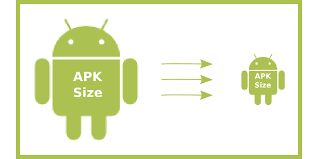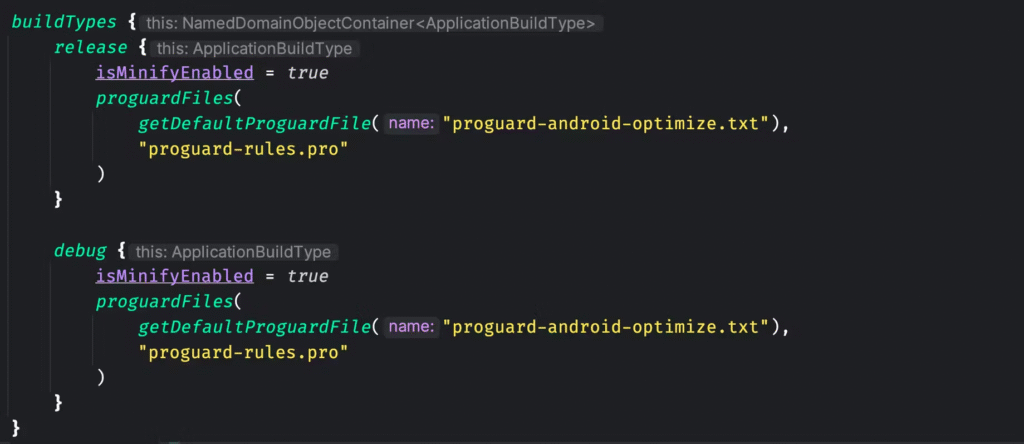A Simple Step-by-Step Guide

How to Optimize APK File Size will display you the way to do this. We will use smooth phrases and quick sentences. Creating an Android app is thrilling. But ensuring your APK file is small is just as essential. A massive APK document can scare customers away. They might not have area on their telephones. They may additionally face long down load instances. So, optimizing your APK record size is a should.
Let’s get began!
Tips to Reduce APK Size
Let’s now talk approximately actual methods to reduce down APK length. We will provide an explanation for every tip in simple words.
Remove Unused Resources:
Many apps include extra files. These might not even be used.
Examples:
- Old photographs
- Layout documents now not in use
- Extra animations
Go thru your app. Delete belongings you don’t want. Use equipment like Lint in Android Studio to discover unused files.
Use WebP for Images:
JPEG and PNG pix are common. But WebP is better. It keeps great and reduces size.
How to convert:
- Use Android Studio’s integrated converter.
- Or use free on line gear.
WebP can reduce image size by 25-35%. That’s a big win.
Compress Images:
Even if you don’t switch to WebP, compress images.
Use tools like:
- TinyPNG
- ImageOptim
- Photopea
Always balance size with image quality. Test different levels.
Avoid Large Libraries:
Third-birthday celebration libraries are helpful. But a few are massive.
Ask yourself:
- Do I actually need this library?
- Can I update it with custom code?
If a library provides just one function, write your own model. Keep your app mild.
Use ProGuard or R8:
These gear shrink your code. They put off unused instructions, fields, and techniques.
R8 is now constructed into Android Studio. It replaces ProGuard.
How to enable it:
- In
gradle.properties, make sure this line is added:
android.enableR8=true
- Then, add rules in
proguard-rules.pro.
These tools can cut your app size by up to 50%.
Use Android App Bundles (.aab)
Google now recommends using .aab instead of .apk.
Why?
- App Bundles permit Google Play ship simplest needed sources.
- Users don’t get greater files they don’t use.
This helps reduce download and install size.
To create an AAB:
- In Android Studio, go to Build > Build Bundle(s) / APK(s) > Build Bundle(s).
- Upload this to Google Play.
Split APKs by ABI:
Different devices use different ABIs (Application Binary Interfaces).
Examples:
- armeabi-v7a
- arm64-v8a
- x86
If you encompass all ABIs in one APK, the file turns into big.
Split APKs by means of ABI. This way, users download handiest what they want.
How to do it:
In build.gradle, add:
splits {
abi {
enable true
reset()
include 'armeabi-v7a', 'arm64-v8a'
universalApk false
}
}Avoid Debug Info in Release Builds:
Debug info is for testing. It adds extra size. Remove it for release builds.
How to do that:
In build.gradle, make sure your release settings include:
debuggable false
shrinkResources true
minifyEnabled true
This will strip debug info and shrink unused resources.
Use Vector Graphics:
Use SVGs or VectorDrawables instead of images when possible.
Why?
- They are a great deal smaller.
- One vector replaces many raster photos (like PNGs) for one of a kind display screen sizes.
But avoid using vectors for complex designs. Test for performance.
Reduce Resource Duplicates:
Sometimes, apps have duplicate sources. For instance, two variations of the equal icon in unique folders.
Check for:
- Same snap shots in drawable-mdpi, drawable-hdpi, and so forth.
- Duplicates in assets
Keep only what you need. Let Android scale images when it can.
Remove Unused Languages:
By default, Android includes many languages. If you simplest need some, take away the rest.
Add this in build.gradle:
resConfigs “en”, “fr” // keep only English and French
This reduces size by cutting extra language files.
Optimize Native Code:
If your app uses NDK (native code), be careful.
Tips:
- Compile simplest for the needed ABIs.
- Use .So files wisely.
- Strip debug symbols.
Also, compress native libraries if possible.
Use Resource Shrinking:
Android can remove unused resources at build time.
In build.gradle, enable:
shrinkResources true
Make sure this is only for release builds. This works with minifyEnabled true.
Use Dynamic Features:
Android App Bundles support dynamic transport.
Break your app into modules. Users can download simplest the features they want.
Example:
- Core app
- Extra module: AR help
- Extra module: Chat
This helps keep the base APK small.
Clean Your Gradle Files:
Your build.gradle files may have:
- Unused dependencies
- Duplicate entries
- Unnecessary code
Review these files. Clean up old stuff.
This won’t always reduce size a lot. But it makes your project lighter and faster to build.
Tools to Help You:
Here are tools that help optimize your APK:
| Tool | Use |
|---|---|
| Android Studio | Analyze APK |
| ProGuard / R8 | Shrink and obfuscate code |
| TinyPNG | Image compression |
| BundleTool | Work with AABs |
| Lint | Detect unused resources |
Use these often to improve your APK.
Benefits of a Small APK
A small APK file helps in many ways:
Faster Downloads:
Users can set up your app speedy. No ready.
Less Storage Used:
Good for users with low-garage devices.
Lower Data Costs:
Important for human beings with restricted mobile statistics.
Higher Install Rate:
Smaller length = much more likely to be downloaded.
Better Reviews:
Users admire mild apps. They supply better ratings.
Easier Updates:
Future updates are small. Saves time and bandwidth.
Real-Life Example
Let’s look at an example.
Before Optimization:
- APK length: forty MB
- Includes: All images as PNG, all languages, debug data
- No resource shrinking
After Optimization:
- APK length: 18 MB
- Images transformed to WebP
- Only English and Spanish stored
- ProGuard enabled
- Unused files removed
That’s more than 50% saved. All this without losing features.
Why APK File Size Matters?

First, let’s recognize why length subjects. The APK report is the bundle of your Android app. It holds all of your app’s files. That consists of pics, code, and greater.
A large APK has some problems:
- Slower downloads
- More data utilization
- Longer install instances
- Less garage area for customers
- App updates are heavier
Many users have limited data or low-end phones. So, smaller APKs make life easier for them.
Check Your APK Size:
Before you optimize, check your APK size. You can do this with Android Studio.
Steps:
- Build your APK.
- Go to Build > Analyze APK.
- Select your APK record.
- Now, have a look at the report breakdown.
You will see what takes up space. Images? Code? Resources? This helps you know what to fix.
Final Optimization Checklist:
Here’s a quick checklist before publishing:
- Remove unused photographs and files
- Convert and compress pix
- Use ProGuard or R8
- Enable shrinkResources
- Use .Aab rather than .Apk
- Split by using ABI
- Strip debug symbols
- Limit supported languages
- Use vectors for simple graphics
- Avoid large libraries
- Optimize native code
Follow this checklist, and your APK will be lighter.
Recommended: How to Install APK on Firestick
Conclusion
Optimizing your APK report size is essential. This improves overall performance. It saves user area. It increases downloads. You don’t need to be an expert. Just follow the recommendations shared right here. Use tools like R8, WebP, and Android App Bundles. Always test your app after adjustments. Make positive nothing breaks. Smaller apps make customers satisfied. And glad customers stick with your app.





